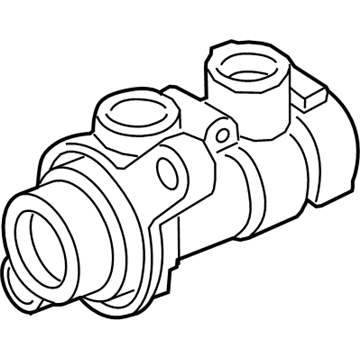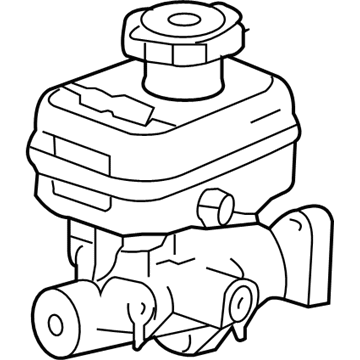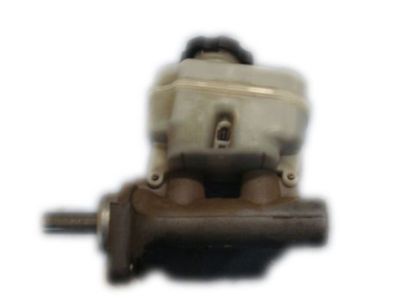My Garage
My Account
Cart
Genuine Chevrolet Colorado Brake Master Cylinder
- Select Vehicle by Model
- Select Vehicle by VIN
Select Vehicle by Model
orMake
Model
Year
Select Vehicle by VIN
For the most accurate results, select vehicle by your VIN (Vehicle Identification Number).
4 Brake Master Cylinders found
Chevrolet Colorado Cylinder Kit, Brk Mas
Part Number: 84749956$66.59 MSRP: $121.08You Save: $54.49 (45%)Ships in 1-2 Business DaysChevrolet Colorado CYLINDER ASM,BRK MAS
Part Number: 19432750$131.17 MSRP: $236.37You Save: $105.20 (45%)Chevrolet Colorado Cylinder Kit, Brk Mas
Part Number: 84764333$42.69 MSRP: $76.58You Save: $33.89 (45%)
Chevrolet Colorado Brake Master Cylinder
The Brake Master Cylinder is one of the crucial units of the braking system in Chevrolet Colorado vehicles as it translates the foot's pedal pressure into hydraulic. This hydraulic pressure transfers to the slave cylinders and thus cause the brakes to engage and produce the needed friction to halt the car. Common brake designs in Chevrolet Colorado include the dual circuit master cylinder, which means that if one circuit is a failure, the other one should offer enough for the brake. Chevrolet over the years has been using both cast iron and aluminum Brake Master Cylinder housings The type of housing used differed with the design of the reservoir as an integral part or external. The internal reservoirs are closed with one cap, while the external ones may be closed with a single threaded or two threaded caps. However, there are situations like leakage of brake fluid or failure within the brake system which definitely is an indication of inefficiency of the brakes, thus the need to have brake master cylinder for the safety and efficiency of the Chevrolet Colorado.
Each OEM Chevrolet Colorado Brake Master Cylinder we offer is competitively priced and comes with the assurance of the manufacturer's warranty for the part. Furthermore, we guarantee the speedy delivery of your orders right to your doorstep. Our hassle-free return policy is also in place for your peace of mind.
Chevrolet Colorado Brake Master Cylinder Parts Questions & Experts Answers
- Q: How do you remove the master cylinder on Chevrolet Colorado?A: To remove the brake master cylinder, start by disconnecting the cable from the negative terminal of the battery. Then, unplug the electrical connector for the fluid level warning switch. Next, remove as much fluid as possible from the reservoir using a suction gun, large syringe, or poultry baster (but never use the baster for food preparation again). Place rags under the fittings and prepare caps or plastic bags to cover the ends of the lines once they're disconnected to prevent brake fluid from damaging the paint. Loosen the fittings at the ends of the Brake Lines where they enter the brake master cylinder using a flare-nut wrench. Pull the brake lines away from the brake master cylinder and plug the ends to prevent contamination. Remove the nuts attaching the brake master cylinder to the power booster and carefully pull the brake master cylinder off the studs. To install the new brake master cylinder, bench bleed it first by mounting it in a vise and attaching brake master cylinder bleeder tubes to the outlet ports. Fill the reservoir with the recommended brake fluid and slowly push the pistons into the brake master cylinder to expel air. Repeat until no more air bubbles are present. Remove the bleed tubes and install plugs in the open ports. Install the brake master cylinder over the studs on the power Brake Booster and tighten the attaching nuts finger tight. Thread the brake line fittings into the brake master cylinder, ensuring not to strip the threads. Tighten the mounting nuts and brake line fittings securely. Fill the brake master cylinder reservoir with fluid and bleed the lines at the brake master cylinder, followed by bleeding the rest of the brake system. To replace the reservoir or O-rings, remove as much fluid as possible from the reservoir and place rags under the brake master cylinder. Use a hammer and small punch to drive out the roll pins that retain the reservoir. Pull the reservoir out and replace the O-rings if necessary. Lubricate the reservoir O-rings with clean brake fluid and press the reservoir into place, securing it with new roll pins. Refill the reservoir with the recommended brake fluid, check for leaks, and bleed the brake master cylinder.
Related Chevrolet Colorado Parts
Browse by Year
2022 Brake Master Cylinder 2021 Brake Master Cylinder 2020 Brake Master Cylinder 2019 Brake Master Cylinder 2018 Brake Master Cylinder 2017 Brake Master Cylinder 2016 Brake Master Cylinder 2015 Brake Master Cylinder 2012 Brake Master Cylinder 2011 Brake Master Cylinder 2010 Brake Master Cylinder 2009 Brake Master Cylinder 2008 Brake Master Cylinder 2007 Brake Master Cylinder 2006 Brake Master Cylinder 2005 Brake Master Cylinder 2004 Brake Master Cylinder






